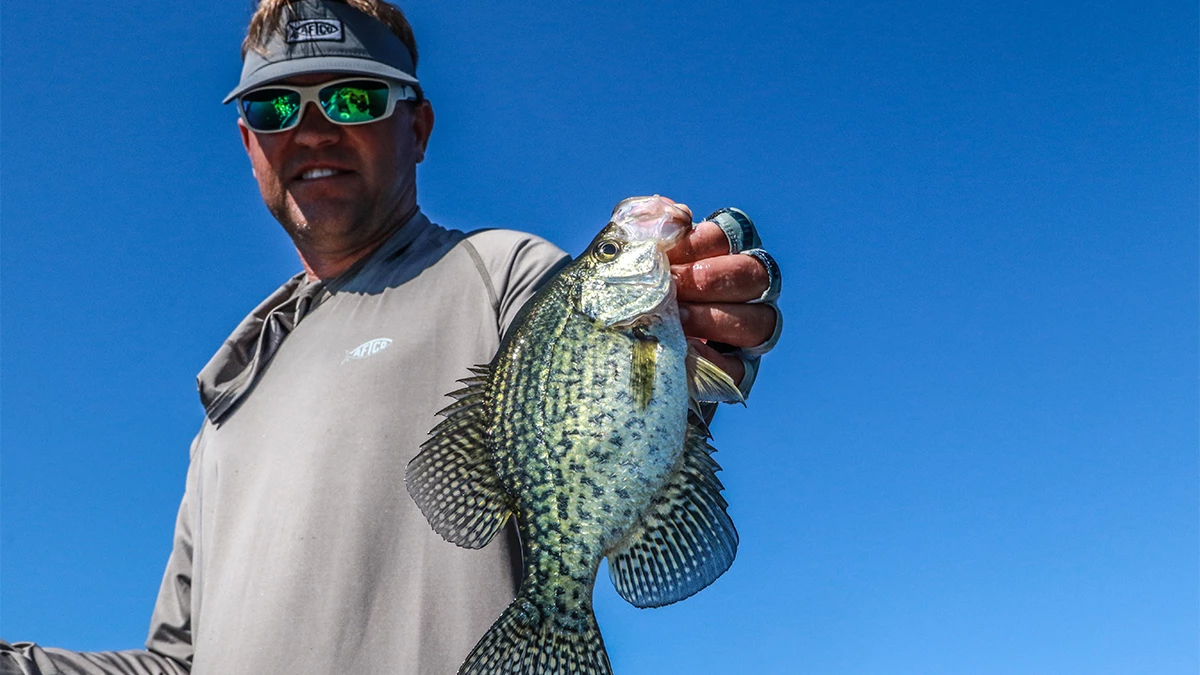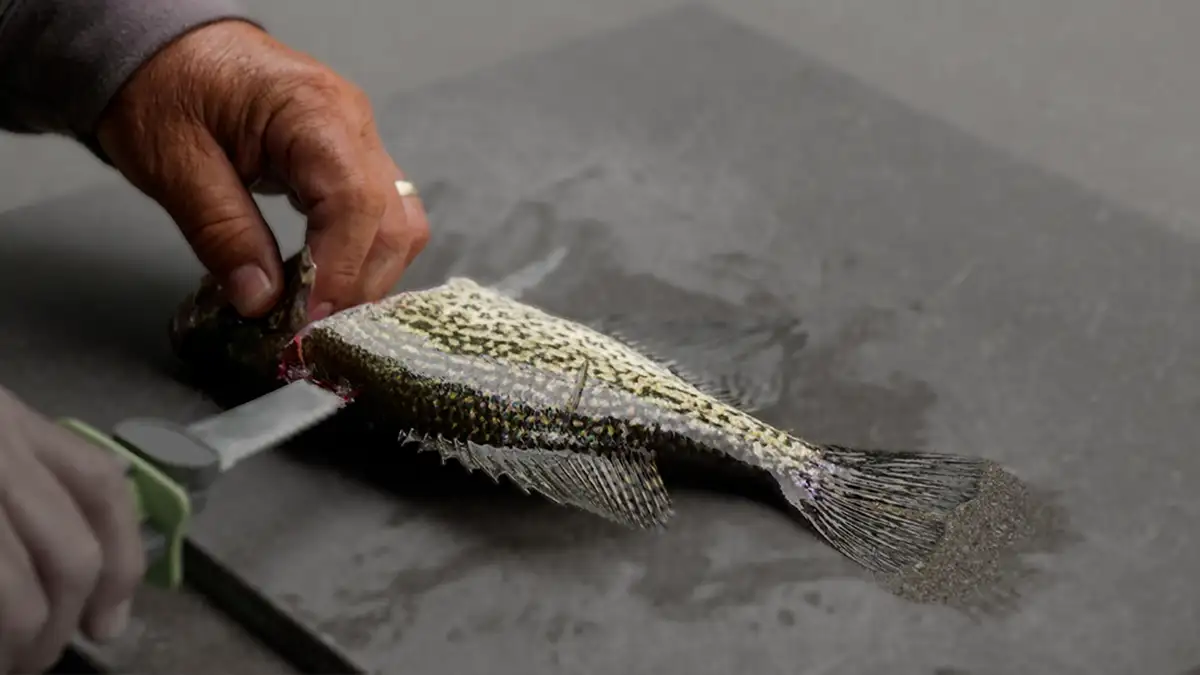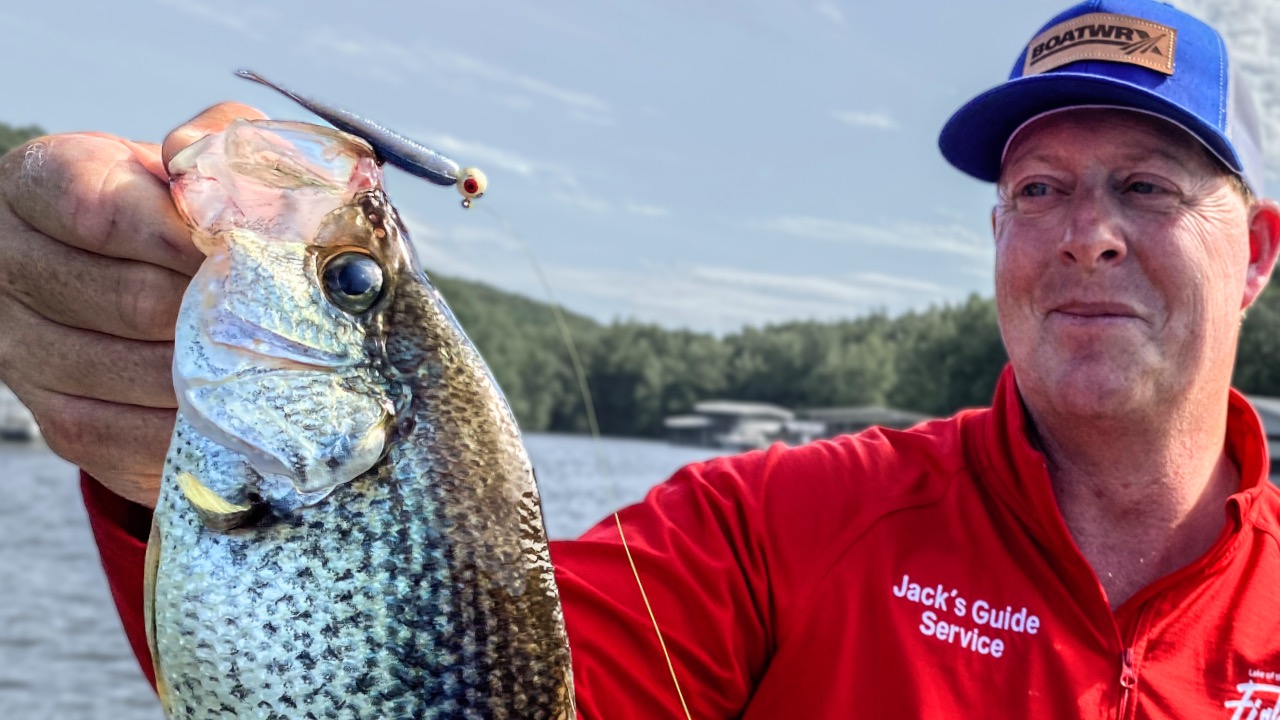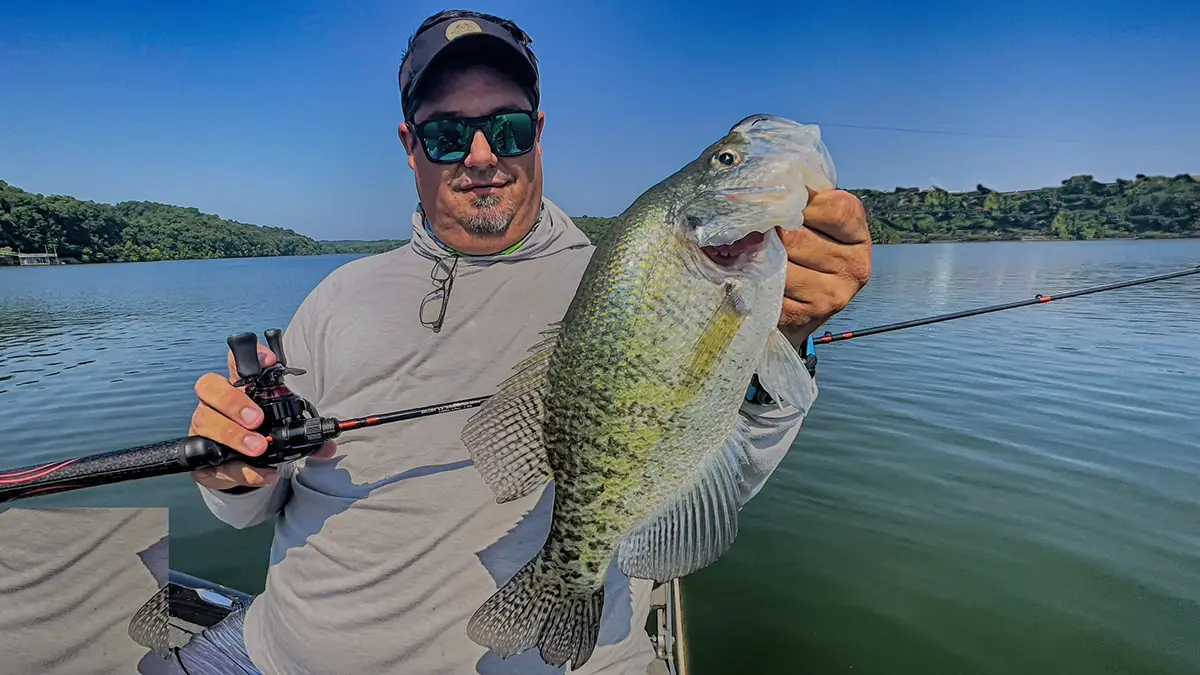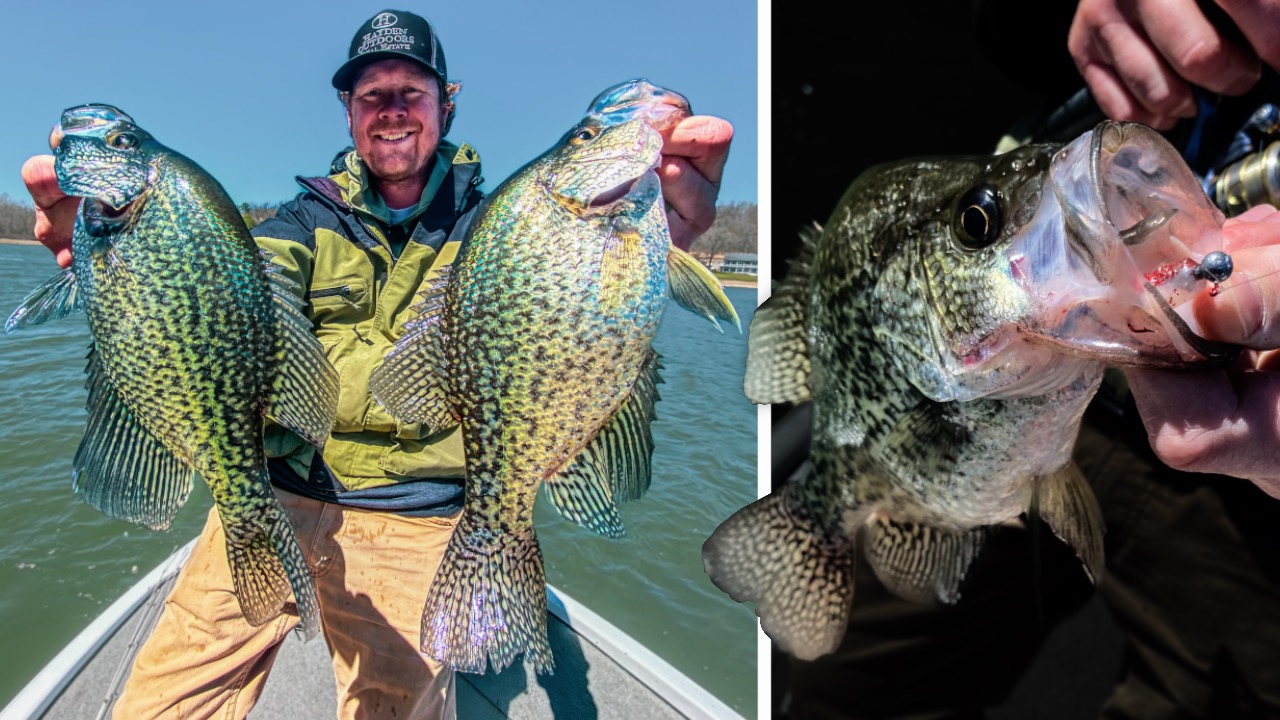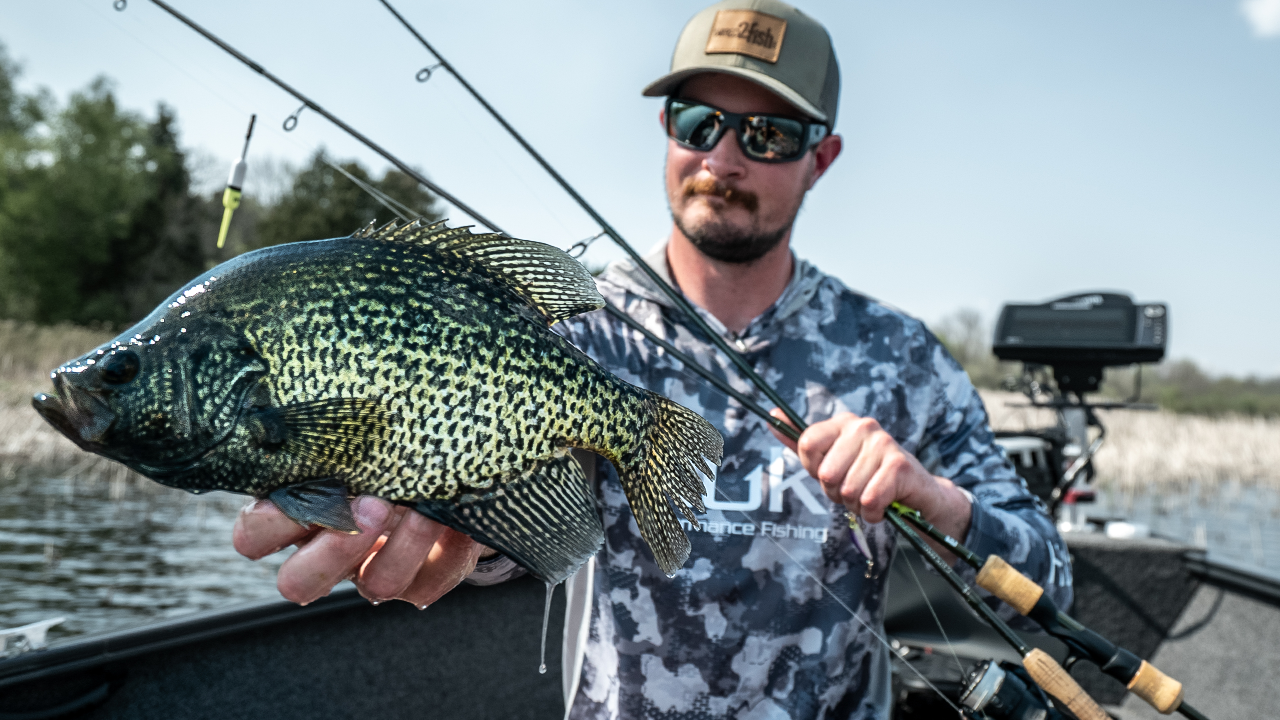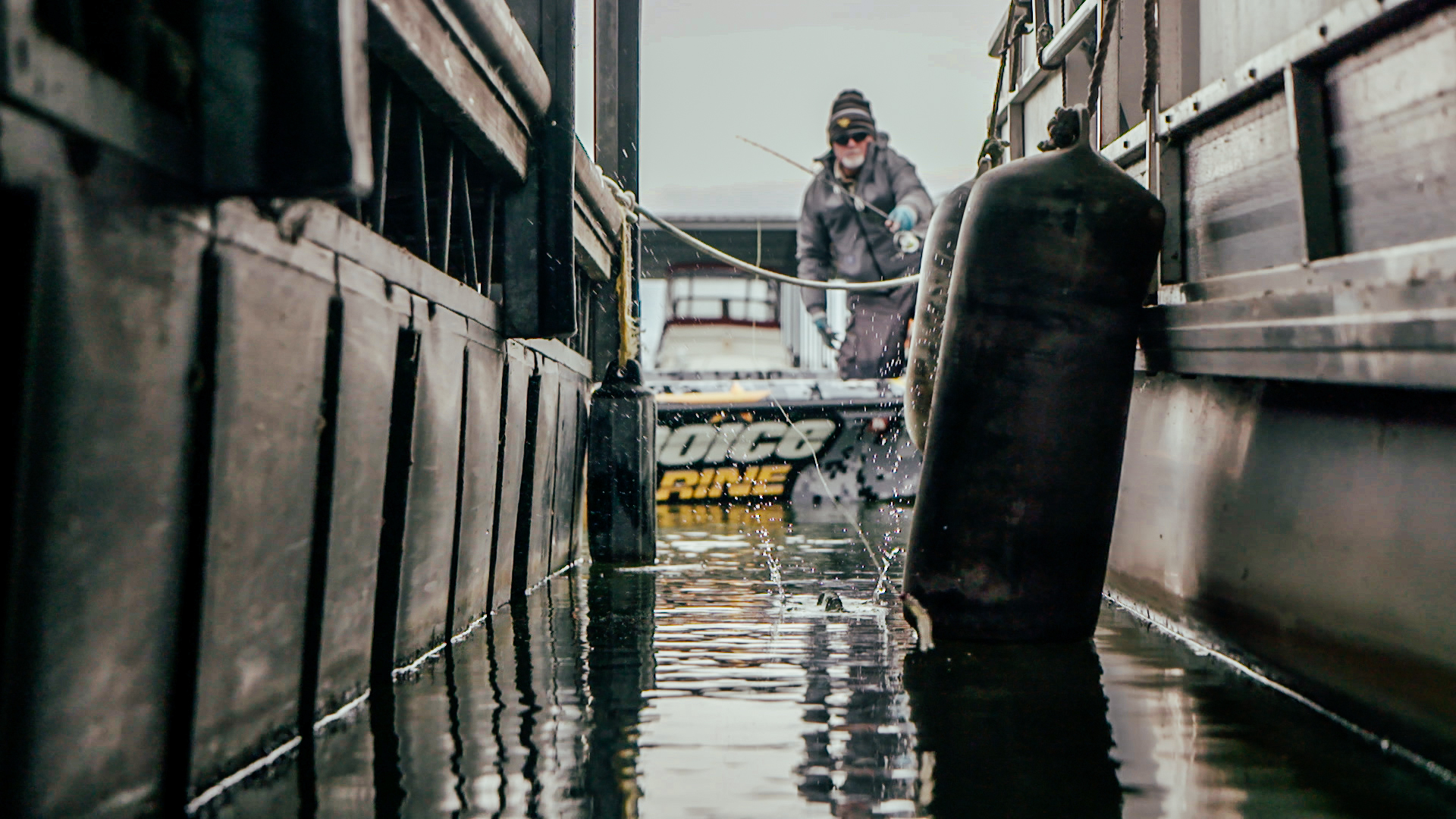Cliff Pirch saw something that had him on edge. Sparing you excessive drama, the bass pro from Payson, Ariz. had spotted a series of rock reefs on the edge of a Mississippi River channel and immediately recognized this as a classic example of locating suspending crappie in the fall.
Admittedly, this day following a Bassmaster Elite tournament on the Upper Mississippi had the Arizona pro in unfamiliar territory, but applying a simple strategic mindset delivered a flurry of freckled fun. The key details: proximity to deep water, current to carry bait schools and hard structure to give the forage a place to park.
“I’m not that familiar with the Mississippi River, but where I live, I like to find those big schools of crappie suspending near deep water, so I guess it’s all relative,” Pirch said. “The fish we were catching were in the deeper water just adjacent to where those ridges came up.
“This gave them access up and down in the water column. They could suspend off the edge or they could move up onto the little reefs to feed. Sometimes, they don’t hold on anything, but if there’s a tall clump of grass that goes from the bottom to the surface, they’ll get on that.”
As Pirch noted, this scenario was, in some ways, similar to the larger picture of the bluffs that he often fishes for largemouth bass in the latter part of the year.
“I’ve caught crappies vertically on bluffs where they were suspended off of it, but I guess that (channel edge structure) was the closest thing we had to a bluff in that body of water,” Pirch said. “Weather, temperature and time of day will make the fish move up and down on those channel edges, but they’re also pretty light sensitive.
“The shad kinda act that way, as well. So, the crappie’s positioning is shad related and light related.”
Applying this scenario’s dynamics to a wide range of areas, Pirch points out the wisdom of checking out any structure, from rocks, to stumps, to blown-in trees decorating a river or creek channel edge. Crappie, he said, will typically suspend over such feeding stations and pick off passing baitfish.
(1 of 2)
Seeing is believing

Drawing another parallel to his bass fishing tactics, Pirch said the rapid development and refinement of forward-facing sonar has greatly impacted the crappie game — especially when fall finds the baitfish and predators on the move. You don’t want to miss any opportunities and you don’t want to spook the fish by running over them.
“You really don’t make pointless casts; every cast you’re putting it in front of fish,” Pirch said. “You’re also watching them react. Sometimes they’ll bite on the fall, but a lot of times, your best hook up is going to be on just a real slow rise, as you lift the bait.
“The biggest benefit is you’re putting the bait in the zone. You’re not 10 feet above them or 10 feet under them and that really does narrow down your focus and increases your odds because you’re able to see that you’re in front of them.”
Pirch runs Lowrance units, so he’s working with Active Target. It’s a pretty straightforward deal, but he’s found that 60 feet is his comfort zone for those real-time images.
“I’m mostly fishing 40 feet or less in front of me,” Pirch said. “But 60 feet allows me to pan around and stay in contact with them, if they’re swimming off, or if I’m drifting.”
From a practical standpoint, Pirch notes that 40-60 feet offers plenty of range for light crappie baits and the light to medium spinning gear with which they’re cast.
(2 of 2)
How to tempt ‘em

Speaking of baits, jigs are, by far, your best bet for this fall channel edge pattern, as you can cast your way up to the targets and pick off aggressive fish and then sit over the school and make persistent vertical presentations. Everyone has their favorite crappie jig and during this outing, Pirch employed a two-prong strategy that allowed him to make those approaching casts, as well as the direct drops.
First, considering we were on a bass-centered mission that just happen to offer some crappie bonus fun, Pirch was working without his proper panfish tackle box. No worries, improvisation prevailed, a Pirch cut off the tail end of a Big Bite Scentsation Slim Minnow and rigged it on a 1/8-ounce jig for the casting distance and swimming action he wanted on those approach presentations.
For his vertical work, Pirch employed a 3/32-ounce jig with a lead head, plastic body and a feathered tail. This aft attraction moves with the slightest rod work, so the subtle presentation is constantly working.
“When I’m specifically focusing on crappie, I like to go with an ultra-light like a 6-foot Fenix Elixir rod and a spinning reel with 4-pound fluorocarbon line,” Pirch said. “If I’m just fishing vertically, that shorter rod makes it easy to drop right under my trolling motor — and you don’t want a ton of power when you’re dealing with 4-pound test.”
As for his presentation strategy, Pirch closed with this logic: “Sitting over them is best because, a lot of times a slow lift of your rod tip is a really good way to catch them. Occasionally, they’ll bit as it’s falling and your line just stops.
If you’re casting and reeling it throw them, that forward facing sonar really shows where you’re at. If you don’t know where they’re at, a lot of people troll for them. That works well too, but when you can see them, you’re putting your bait in front of them the entire time.”
As an Amazon Associate, we may earn income when you click on an Amazon link. Thanks for helping us do what we love.







